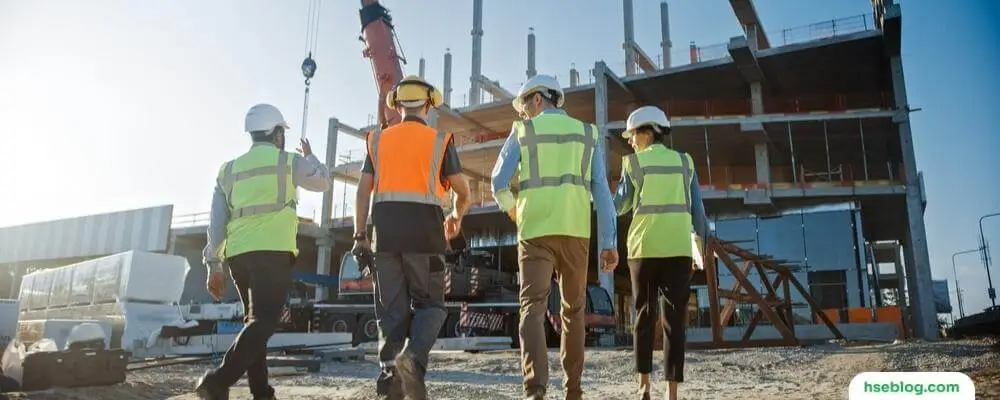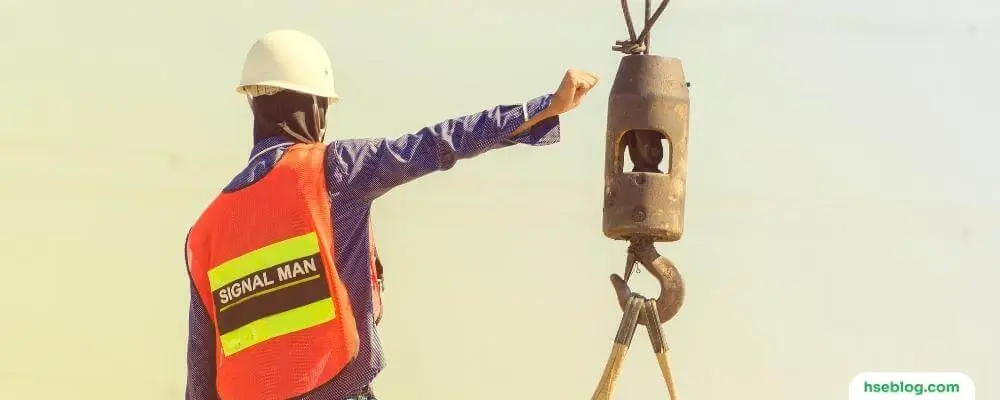Crane operations are integral to various industries, such as construction, shipping, and manufacturing. The enormous, towering structures you see lifting heavy loads are not just operated by one person; they function through the synchronized efforts of a skilled team. This team comprises crane operators, signal persons, crew members, and riggers. Each of these professionals is a vital cog in the wheel, ensuring that the crane functions safely and efficiently. Without any of these roles, the safety and success of crane operations could be severely compromised.
Understanding the responsibilities of each position is essential for those in the industry and anyone who might find themselves near a crane operation. In this blog post, we delve into the intricate world of crane operations and break down the duties and responsibilities of the crane operator, signal person, crew, and rigger. Whether you are an aspiring professional in this field or a curious observer, this comprehensive guide will provide insights into the multifaceted process that keeps cranes moving smoothly and safely.
Duties Of Crane Operator, Signal Person, Crew, And Rigger
Crane operations are critical in construction, shipping, and various other industries. The seamless operation of a crane involves the expertise and coordination of several professionals, including the crane operator, signal person, crew, and rigger. Let’s explore the duties and responsibilities of each:

1. Duties Of Crane Operator
The duties of a crane operator involve many responsibilities. Here are some duties of a crane operator:
- Ensure the crane is in good working condition by conducting safety checks before and during operation.
- Ability to read and understand safety-related instructions, diagrams, and other materials related to operating cranes.
- Establish communication with ground personnel and confirm understanding of signals before proceeding.
- Operate cranes according to safety procedures and local laws.
- Inspect the crane for any deficiencies before an operation, such as proper lubrication and safe working conditions of the hoist, trolley, and bridge mechanisms.
- Monitor activities in the surrounding area to identify potential hazards or obstacles that may interfere with lifting operations.
- Keep an accurate record of operations and maintenance logs.
- Maintain a safe working environment by observing proper lifting techniques and safety rules.
- Secure loads to prevent shifting or slipping while in transit and during lifts.
- Complete post-operation checks to ensure the crane is in good working order before shutting it down.
- Properly store and secure the crane when not in use.
- Respond quickly and efficiently to emergencies by following safety protocols.
- Assist with the assembly and/or disassembly of crane components as needed.
- Provide training, supervision, and guidance to crane operators on proper operating techniques, safety procedures, and maintenance.
- Report any accidents or violations to the supervisor immediately.
Operator Responsibility While the Load is Suspended
The operator must not leave the controls while the load is suspended except where ALL of the following criteria are met:
- The operator remains adjacent to the equipment and is not engaged in other duties.
- The load is to be held suspended for a period of time exceeding normal lifting operations.
- The competent person determines it is safe and implements measures necessary to restrain the boom hoist and telescoping, load, swing, and outrigger or stabilizer functions.
- Barricades or caution lines and notices are erected to prevent all employees from entering the fall zone. No employees are permitted in the fall zone.
The four criteria immediately above do not apply to working gear (such as slings, spreader bars, ladders, and welding machines) where the weight of the working gear is negligible relative to the lifting capacity of the equipment as position, and the working gear is suspended over an area other than an entrance or exit.

2. Duties Of Crane Crew
A crane crew supports the operator and ensures all safety procedures are followed. Here are some duties of a crane crew:
- Monitor the working area and ensure no hazards or obstacles are near the crane.
- Assist with assembling and/or disassembling components of the crane as needed.
- Inspect the crane and its components before each use to ensure all parts are in good working condition.
- Secure loads to prevent shifting or slipping during lifts.
- Monitor the crane’s operations and provide guidance as needed.
- Assist with the cleaning and maintenance of the crane after an operation.
- Ensure that the rigging is appropriately attached to the load and that it is rigged correctly and safely.
- Follow all local laws and safety regulations as they pertain to crane operations.
- Ensure the operator can view their surroundings and adequately communicate with ground personnel.
- Respond quickly and efficiently to emergency situations by following safety protocols.
- Be aware of potential hazards near the work area, and report them to the supervisor immediately.
- Provide training, supervision, and guidance to crane operators on proper operating techniques, safety procedures, and maintenance.

3. Duties Of Crane Signal Operator
The signal operator is responsible for coordinating and overseeing the lifting operations. Here are some duties of a signal operator:
- Ensure that all personnel involved in the operation understand and follow safety protocols.
- Read, understand, and interpret diagrams or manuals related to crane operations.
- Monitor the movements of the crane at all times during an operation.
- Use hand and voice signals to direct the crane operator.
- Communicate and coordinate with the crane operator, crew, and ground personnel during an operation.
- Provide instruction or guidance to crew members on proper handling techniques.
- Keep an accurate record of operations and maintenance logs.
- Maintain a safe working environment by observing proper lifting techniques and safety rules.
- Be aware of potential hazards near the work area, and report them to the supervisor immediately.
- Assist with the assembly and/or disassembly of crane components as needed.
- Respond quickly and efficiently to emergencies by following safety protocols.
- Provide training, supervision, and guidance to crane operators on proper operating techniques, safety procedures, and maintenance.
- Monitor the crane’s operations and guide as needed.
- Report any accidents or violations to the supervisor immediately.

4. Duties Of Crane Riggers
Riggers ensure loads are secured safely and efficiently to avoid damage or injury during a lift. Here are some duties of a rigger:
- Read, understand, and interpret diagrams or manuals related to rigging operations.
- Inspect rigging equipment before each use to ensure all components are in good working condition.
- Select and install appropriate rigging hardware and accessories for the load.
- Secure loads to prevent shifting or slipping during lifts.
- Inspect and adjust slings, cables, chains, and other rigging components.
- Communicate with the crane operator to coordinate the lift of the load.
- Ensure the load is properly balanced and secured before the crane lifts it.
- Follow all local laws and safety regulations as they pertain to rigging operations.
- Be aware of potential hazards near the work area, and report them to the supervisor immediately.
- Understand, use, and teach proper lifting techniques for different types of loads.
- Maintain a safe working environment by observing proper lifting techniques and safety rules.
- Train, supervise, and guide other crew members on proper rigging methods and safety protocols.
- Report any accidents or violations to the supervisor immediately.
Conclusion
In conclusion, the safe and efficient operation of cranes is a collective endeavor that hinges on the proficiency and collaboration of crane operators, signal persons, crew members, and riggers. Each plays a critical role, from maneuvering the crane and communicating instructions to ensuring the crane is in optimal condition, and the loads are securely rigged. Their synchronized efforts, commitment to safety, and specialized skills drive the seemingly effortless movement of colossal weights, pivotal in the infrastructural development that shapes our world.

